 July 8, 2021 John E. Ross, KD8IDJ, Editor
| ||||||
First X-Class Major Solar Flare of Solar Cycle 25 Blacks Out HF on July 3 For a brief time on July 3, a lot of radio amateurs were wondering, "Where did the bands go?" as the first X-class solar flare in 4 years blacked out HF propagation for a time. "I was on 20-meter FT8, and my waterfall display went from solid red signals to solid nothing in the blink of an eye," Scott Craig, WA4TTK, told "K7RA Solar Update" Editor Tad Cook, K7RA. "It lasted about 10 minutes." Craig was not alone. "Many American radio amateurs reported sudden HF propagation blackouts on Saturday morning, July 3, when solar active region 12838 produced an X1.5 major solar flare that reached maximum intensity at 1429 UTC, the first X-class solar flare of Solar Cycle 25 and the first since 2017," said Frank Donovan, W3LPL. "HF propagation blackouts are caused when x-ray and extreme ultraviolet radiation from X-class In this instance, it caused what NOAA's Space Weather Prediction Center (SWPC) calls an R3-level or "strong" radio blackout (on a scale of R1 - R5). An R3 incident can cause a "wide-area blackout of HF radio communication [and] loss of radio contact for about an hour on [the] sunlit side of Earth. Low-frequency navigation signals degraded for about an hour." Donovan said that X-class major solar flares are necessary consequences of steadily increasing Solar Cycle 25 activity. "95% of all X-class solar flares occur when the solar flux index is 90 or greater. The remaining 5% can occur any time during the solar cycle," he points out. "X1-class major solar flares typically degrade HF propagation for only an hour or two at mid and high latitudes, only on Earth's sunlit side." X-class major flares are measured on an open-ended scale. The strongest one ever recorded was an X28 flare in 2003, hundreds of times more powerful than the July 3 X1.5 solar flare. X10-class and stronger solar flares typically have effects that last for most of a day and affect the entire sunlit side of the Earth. Fortunately, X10-class solar flares occur only about once every 20 years or more. "Much more severe and long-lasting HF propagation degradations are often caused by the coronal mass ejections (CMEs) often associated with -- but not caused by -- major solar flares," Donovan explained. "HF propagation degradation caused by CMEs typically begins about 2 The CME associated with the July 3 X1.5 solar flare is likely to have little to no effect on HF propagation going forward, because the active region was very close to the western edge of the visible solar disk when the CME erupted. Region 12838 rotated off the visible disk on Sunday, July 4. Solar flares have no significant effect on VHF ionospheric propagation, but can degrade satellite communications passing through the ionosphere. More frequent, less powerful M-class medium solar flares produce short-duration degradation at high latitudes. Very frequent, much weaker A-, B-, and C-class solar flares do not degrade HF propagation. -- Thanks to Frank Donovan, W3LPL Amateur Radio Volunteers Prepared for and Tracked Elsa The weather event known as Elsa, a tropical storm that also achieved Category 1 hurricane status, prompted actions by ARRL, the Amateur Radio Emergency Service (ARES), and the Hurricane Watch Net (HWN) as the storm set its sights on Florida this week. The storm made landfall along the Gulf Coast of northern Florida on July 7, before weakening significantly. As Tropical Storm Elsa moved up the East Coast, the Eastern New "As of now, it's just preliminary planning with no definite plans for opening shelters or service delivery sites," Phil Nelson, N2PN, Regional Field Communications Manager of ARC Greater New York said on July 7. "Please stay aware of developing conditions," Eastern New York Section Emergency Coordinator (SEC) Dave Galletly, KM2O, urged. "I ask that groups in the ENY Southern District prepare for possible deployment in support of ARC as of Friday, July 9. Groups in the Central and Northern Districts should also keep in touch with weather developments and stand by for possible mid to long-term support of Southern District groups." On July 6, Northern Florida SEC Karl Martin, K4HBN, activated the ARES Net on 3.950 kHz. An open net was activated on SARnet -- a UHF-linked repeater network. As the evening developed, the Section saw six emergency operations centers and many shelters open. The Northern Florida Section stood down from a Level III monitoring activation on July 7. "ARRL Headquarters and the ARRL Emergency Management The Hurricane Watch Net initially activated for Elsa on July 2, after it became a Category 1 hurricane. "Because the storm was extremely close to Barbados, St. Lucia, and St. Vincent, we went into operation to collect and forward weather data to the National Hurricane Center in Miami," Net Manager Bobby Graves, KB5HAV, said. The HWN reactivated for several hours on July 6, standing down after about 8 hours. Elsa has produced some wind damage, but the major hazard from the storm so far appears to be heavy rain, flooding, and storm surge. Some suspected tornadoes have been reported. Elsa is expected to move across the southeastern and mid-Atlantic US. ARRL Podcasts Schedule
The On the Air and Eclectic Tech podcasts are sponsored by Icom. Both podcasts are available on iTunes (iOS) and Stitcher (Android) as well as on Blubrry -- On the Air | Eclectic Tech. The June 2021 activity report of the Volunteer Monitoring (VM) Program has been released. The VM Program is a joint initiative between ARRL and the FCC to enhance compliance in the Amateur Radio Service.
The Volunteer Monitor Program Administrator had one meeting with the FCC, and two cases were referred to the FCC for further action. One case involves a taxi company in Alaska operating on 2 meters. -- Thanks to Volunteer Monitor Program Administrator Riley Hollingsworth, K4ZDH ARRL Learning Network Webinars Visit the ARRL Learning Network (a members-only benefit) to register, check on upcoming webinars, and to view previously recorded sessions. Learning with High-Altitude Balloons -- Jack McElroy, KM4ZIA, and Audrey McElroy, KM4BUN / Thursday, July 22, 2021 @ 3:30 PM EDT (1930 UTC)
ARRL members may register for upcoming presentations and view previously recorded Learning Network webinars. ARRL-affiliated radio clubs may also use the recordings as presentations for club meetings, mentoring new and current hams, and discussing amateur radio topics. The ARRL Learning Network schedule is subject to change. Young Caribbean Nation Formalizing Amateur Radio Guidelines and Standards With a population just north of 71,000, the Caribbean island of Dominica (J7) boasts a modest but active ham radio population. Given Dominica's vulnerability to hurricanes, the ham radio emphasis often focuses on emergency communications support. In 2017, after Hurricane Maria hit the tiny island, ham radio filled a huge telecommunications gap. Now the country's telecommunications regulator is asking hams to help formulate new amateur radio guidelines and standards. Dominica's National Telecommunication "There is limited guidance for those who seek to utilize the telecommunications media for their own personal use, enjoyment, and fulfillment as [a] hobby, as in the case of amateur radio," the NTRC said in the consultation document. "Generally, [amateur radio] is self-regulating, and so the involvement of the telecommunications regulator is minimized. Though the amateur radio clubs generally do their best to provide some level of guidance and support to existing and prospective operators, there is great need for a formal and comprehensive set of guidelines and standards for the operation of Amateur Radio Services in Dominica." Resources used in developing the draft proposals included ARRL, the FCC's Part 97 amateur radio rules, and the International Telecommunication Union (ITU). "A primary source for this document was the Code of Federal Regulations (Title 47, Part 97), due to its comprehensiveness and its informal adoption in certain parts by the local amateur radio fraternity," the NTRC said. Specific ARRL resources included The ARRL FCC Rule Book; The ARRL Operating Manual for Radio Amateurs, and The ARRL Handbook for Radio Communications. The regulators also
looked at Canada's and Australia's amateur radio rules. The proposals would provide for three license classes -- Novice, General, and Advanced -- as well as licensing procedures for each. The NTRC held a public meeting via Zoom in mid-June to "highlight and clarify important issues" regarding the consultation. NTRC personnel later met with amateur radio club representatives at the NTRC's office. Under Telecommunications Act No. 8 of 2000 and its associated regulations, the NTRC oversees compliance with all telecommunication rules in Dominica, including amateur radio. The NTRC also manages amateur radio spectrum. Following the initial comment period, the NTRC will review the comments and subsequently submit the Revised Draft Amateur Radio Guidelines and Standards document for comments on the initial comments received. The NTRC will also review those comments and finalize the policy document, taking all views into consideration, to adopt and publish the Amateur Radio Guidelines and Standards document. 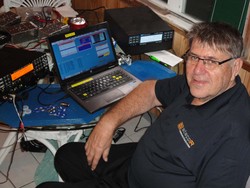 Announcements Announcements
Amateur Radio in the News ARRL Public Information Officers, Coordinators, and many other member-volunteers help keep amateur radio and ARRL in the news.
Share any amateur radio media hits you spot with us. Registrations Strong for 24th Annual International Lighthouse Lightship Weekend Set for August 21 - 22, the 24th annual International Lighthouse Lightship Weekend (ILLW) will be back, despite the disruption of the global COVID-19 pandemic. Each year, typically on the third weekend of August, participants set up portable stations at or near lighthouses and lightships around the world. Last year, prospects for the event were looking dim, but "regular supporters wanted the event to be a beacon of hope," the event's sponsor said. More than 360 registrations from 43 countries backed up their belief. As of July 8, this year's registration tally had already topped 200, with 25 Each station's operators decide how they will operate their station with respect to modes and bands. There are no power restrictions or entry classes and no scores. "We wish operators to enjoy themselves and have fun while making contact with as many amateur radio stations as possible," ILLW said in the event announcement. "We request that stations take time to work other lighthouses or lightships, as well as the slow operators or newly licensed or QRP stations." Participants contact the relevant authorities to obtain permission to operate. It is within the guidelines of the event to move operations from a lighthouse to a museum for historic reasons. In any case, the lighthouse should be visible to, and visited by, the public wherever possible. Visit the ILLW website for more detailed information. NRRL Receives Grants to Support Online Learning, Emergency Preparedness The Norwegian Radio Relay League (NRRL) has recently received two substantial grants that will further its education and emergency preparedness programs. NRRL was given nearly $81,500 from the Research Council of Norway for the development of teaching material for amateur radio. According to NRRL, the grant will fund measures that "strengthen children's and young people's digital competence "Voluntary efforts from NRRL members will also be an important input factor in the project," NRRL said. "We hope that many will take an active part in this work, which will be important for the future of amateur radio in Norway." NRRL has also received a grant of nearly $94,000 from the Gjensidige Foundation that will further support its emergency preparedness and response initiatives. The funds will specifically enable NRRL to develop and produce new tracking units that NRRL will use in its rescue service to locate volunteer teams on a map and in real time. In addition, the funds will support much-needed equipment and joint exercises and skills development. "Volunteer rescue crews have been a critical part of the Norwegian rescue service for more than 50 years," said NRRL's Liaison Service head, Henrik Solhaug, LA6ETA. "In close cooperation with the police and the Main Rescue Center, they have, over the years, searched for and found thousands of missing individuals and saved hundreds of lives. These are tasks that the public sector itself does not have the capacity to perform, and volunteers have largely covered the costs themselves." -- Thanks to NRRL In Brief... The QSO Recorder Indexing Service lets you hear your contacts. Developed by Vasiliy Gokoyev, K3IT, the QSO Recorder Indexing Service (QSORDEX) allows radio amateurs to share their contest and DXpedition contact audio recordings. Users then can search the site to retrieve them by call sign. Audio files are in .mp3 format, saved according to the system's naming convention, and then uploaded to the Dropbox.com file-hosting service. The site itself does not store any files; it only indexes them. To add your own contacts, register at Dropbox.com and download and install the Dropbox PC client. A free 2 GB Dropbox account can store approximately 12,000 contacts, although users may purchase additional space above what is provided with a free account. See the QSOrder website for additional details.
The K7RA Solar Update Tad Cook, K7RA, Seattle, reports: Solar activity continues to increase. The average daily sunspot number was 34.7 last week; this week it jumped to 55.6. Average daily solar flux increased from 86.9 to 88.9. Despite solar flare activity pushing a sudden ionospheric disturbance and a dramatic HF radio blackout (see "First X-Class Major Solar Flare The flare was an X1.5-class event, the biggest since September 2017 and the only X-Class solar flare since then. Events such as this can be so dramatic that some may initially assume a hardware or antenna failure. Fortunately, these are rare. Predicted solar flux is 76 on July 8; 74 on July 9 - 11; 72 on July 12 - 13; 70 and 74 on July 14 - 15; 82 on July 16 - 18; 84 on July 19; 88 on July 20 - 22; 90 on July 23 - 28; 88 on July 29 - August 2; 84 on August 3; 82 on August 4 - 5, and 80 on August 6 - 11. Predicted planetary A index is 5, 8, 12, 8, 12, 16, and 8 on July 8 - 14; 5 on July 15 - 17; 15, 12, and 10 on July 18 - 20; 5 on July 21 - 31; 10 and 8 on August 1 - 2; 5 on August 3 - 5; 15 and 12 on August 6 - 7, and 5 on August 8 - 13. Sunspot numbers for July 1 - 7 were 56, 72, 81, 60, 43, 52, and 25, with a mean of 34.7. The 10.7-centimeter flux was 94.1, 94.9, 93.7, 91.1, 89.4, 83.2, and 76, with a mean of 86.9. Estimated planetary A indices were 7, 5, 4, 3, 7, 8, and 6, with a mean of 6.1. Middle latitude A index was 7, 6, 4, 4, 9, 8, and 6, with a mean of 6.1. A comprehensive K7RA Solar Update is posted Fridays on the ARRL website. For more information concerning radio propagation, visit the ARRL Technical Information Service, read "What the Numbers Mean...," and check out this Propagation Page. A propagation bulletin archive is available. For customizable propagation charts, visit the VOACAP Online for Ham Radio website. Share your reports and observations. Just Ahead in Radiosport
Upcoming ARRL Section, State, and Division Conventions Many conventions and hamfests have been canceled or postponed due to the coronavirus pandemic. Check the calendar of canceled events on the ARRL website.
Find conventions and hamfests in your area.
ARRL -- Your One-Stop Resource for . .
Subscribe to...
Free of charge to ARRL members...
__________________________________________ | ||||||
 Announcements
Announcements(1).jpg) solar flares strongly ionizes the absorbing D-region in the Earth's sun-facing dense lower ionosphere," he explained.
solar flares strongly ionizes the absorbing D-region in the Earth's sun-facing dense lower ionosphere," he explained.-July-3-2021.PNG) days after the effects of the associated solar flare, the duration of the delay depending on interactions between the CME and the solar wind."
days after the effects of the associated solar flare, the duration of the delay depending on interactions between the CME and the solar wind.".png) York (ENY) and New York-Long Island (NLI) Sections received a request from the American Red Cross (ARC) Greater New York Region to have ARES groups put on alert from July 9 through July 15.
York (ENY) and New York-Long Island (NLI) Sections received a request from the American Red Cross (ARC) Greater New York Region to have ARES groups put on alert from July 9 through July 15.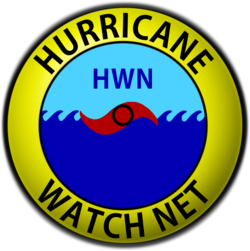 Department are monitoring the storm's progress and will be ready to assist Sections affected by Elsa," ARRL Emergency Management Director Paul Gilbert, KE5ZW, assured as the storm approached.
Department are monitoring the storm's progress and will be ready to assist Sections affected by Elsa," ARRL Emergency Management Director Paul Gilbert, KE5ZW, assured as the storm approached..jpg) The latest episode of the On the Air podcast (Episode 18) features a discussion with ARRL Lifelong Learning Manager Kris Bickell, K1BIC, about the launch of the new ARRL Learning Center later this month.
The latest episode of the On the Air podcast (Episode 18) features a discussion with ARRL Lifelong Learning Manager Kris Bickell, K1BIC, about the launch of the new ARRL Learning Center later this month..jpg) The latest edition of Eclectic Tech (Episode 37) features a discussion about the mysterious Schumann Resonances and a chat with Grant Connell, WD6CNF, about an interesting Morse sending and receiving application he created for Windows.
The latest edition of Eclectic Tech (Episode 37) features a discussion about the mysterious Schumann Resonances and a chat with Grant Connell, WD6CNF, about an interesting Morse sending and receiving application he created for Windows. The FCC was requested to review a vanity call sign application filed by a Georgia licensee because of an apparently false answer to the question regarding a felony conviction.
The FCC was requested to review a vanity call sign application filed by a Georgia licensee because of an apparently false answer to the question regarding a felony conviction.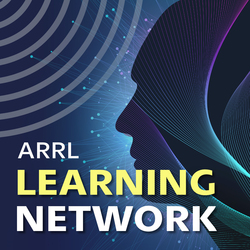 Jack McElroy, KM4ZIA, and Audrey McElroy, KM4BUN, talk about their experiences with high-altitude balloons and explain how hams can get involved in successfully launching balloons. They'll also talk about how to make high-altitude balloons a fantastic learning experience for students who may want to be involved in ham radio.
Jack McElroy, KM4ZIA, and Audrey McElroy, KM4BUN, talk about their experiences with high-altitude balloons and explain how hams can get involved in successfully launching balloons. They'll also talk about how to make high-altitude balloons a fantastic learning experience for students who may want to be involved in ham radio. Regulatory Commission (NTRC) is collecting comments until July 12 from radio amateurs participating in a "
Regulatory Commission (NTRC) is collecting comments until July 12 from radio amateurs participating in a "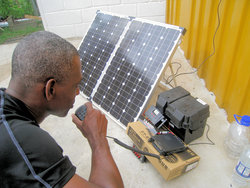
.jpg) globally. He was also an accomplished and successful contester."
globally. He was also an accomplished and successful contester.".jpg) participants signed up to activate lighthouses or lightships in the US. The ILLW typically attracts entries for some 500 lighthouses in more than 40 countries. The event has few rules and is not a typical contest-type event. The ILLW will begin at 0001 UTC on August 21 and continue through 2400 UTC on August 22.
participants signed up to activate lighthouses or lightships in the US. The ILLW typically attracts entries for some 500 lighthouses in more than 40 countries. The event has few rules and is not a typical contest-type event. The ILLW will begin at 0001 UTC on August 21 and continue through 2400 UTC on August 22.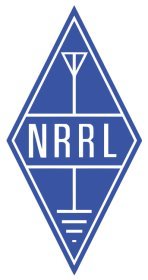 through leisure activities." NRRL will develop online learning material for amateur radio and other activities over the course of the 2-year project.
through leisure activities." NRRL will develop online learning material for amateur radio and other activities over the course of the 2-year project..jpg) To keep member records up to date, ARRL emailed Life Members on June 16. A follow-up email will be sent in the next few days, asking them to verify their mailing address. Be assured that it is a legitimate request sent from ARRL.
To keep member records up to date, ARRL emailed Life Members on June 16. A follow-up email will be sent in the next few days, asking them to verify their mailing address. Be assured that it is a legitimate request sent from ARRL. 
 The CHESS CubeSats will not carry amateur radio payloads. It was announced in January that two CHESS CubeSats set for launch in 2022 would carry amateur radio linear transponders. The project sponsors
The CHESS CubeSats will not carry amateur radio payloads. It was announced in January that two CHESS CubeSats set for launch in 2022 would carry amateur radio linear transponders. The project sponsors .jpg) A filing extension has been granted in the FCC space launch proceeding The FCC Office of Engineering and Technology
A filing extension has been granted in the FCC space launch proceeding The FCC Office of Engineering and Technology 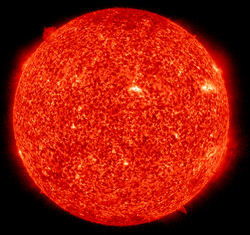 of Solar Cycle 25 Blacks Out HF on July 3"), at least the average daily planetary A index for the week was only 5.7, down from 6.1 last week. The average middle latitude A index was also 6.1 last week, and it was 6.3 this week.
of Solar Cycle 25 Blacks Out HF on July 3"), at least the average daily planetary A index for the week was only 5.7, down from 6.1 last week. The average middle latitude A index was also 6.1 last week, and it was 6.3 this week..jpg)








